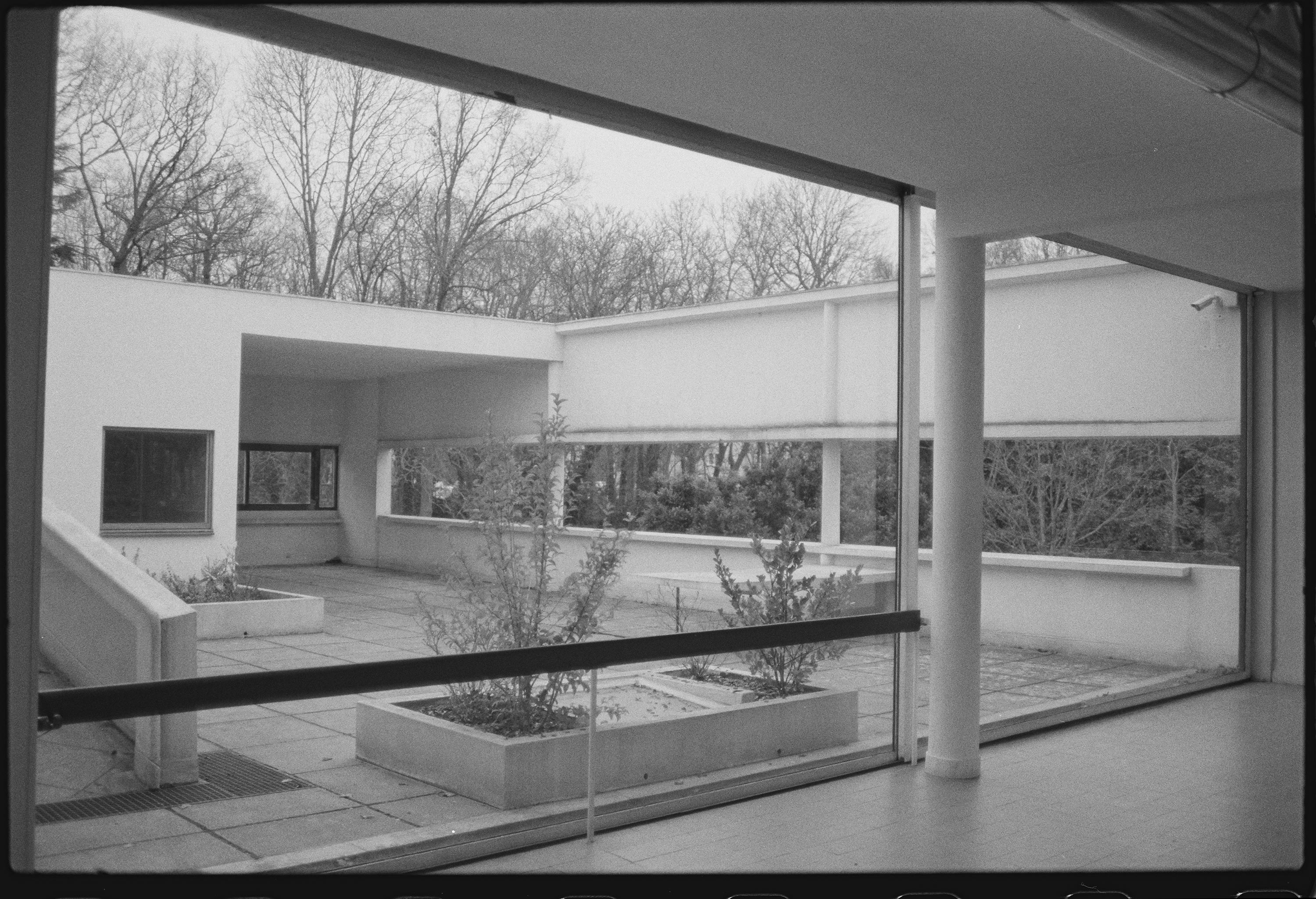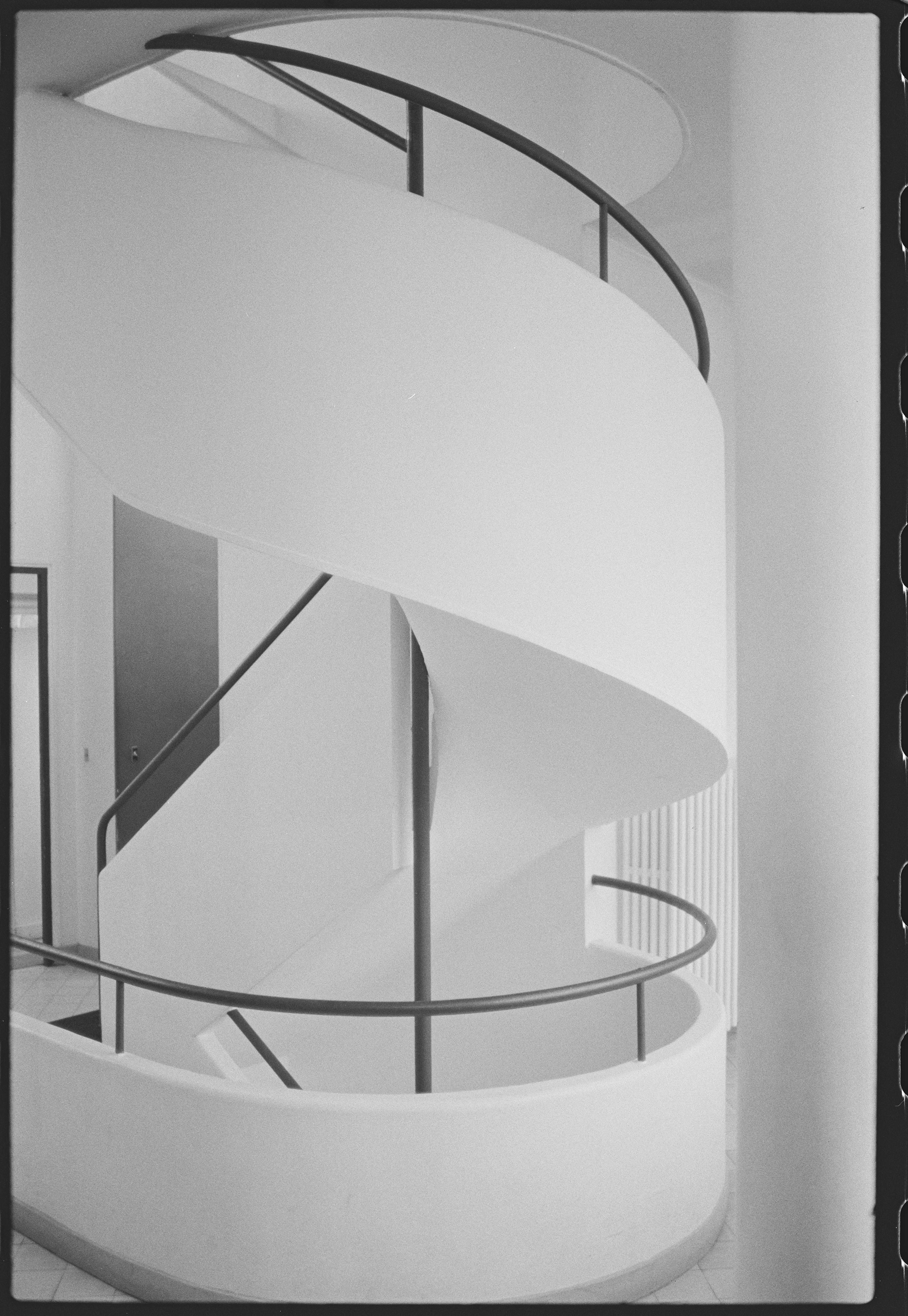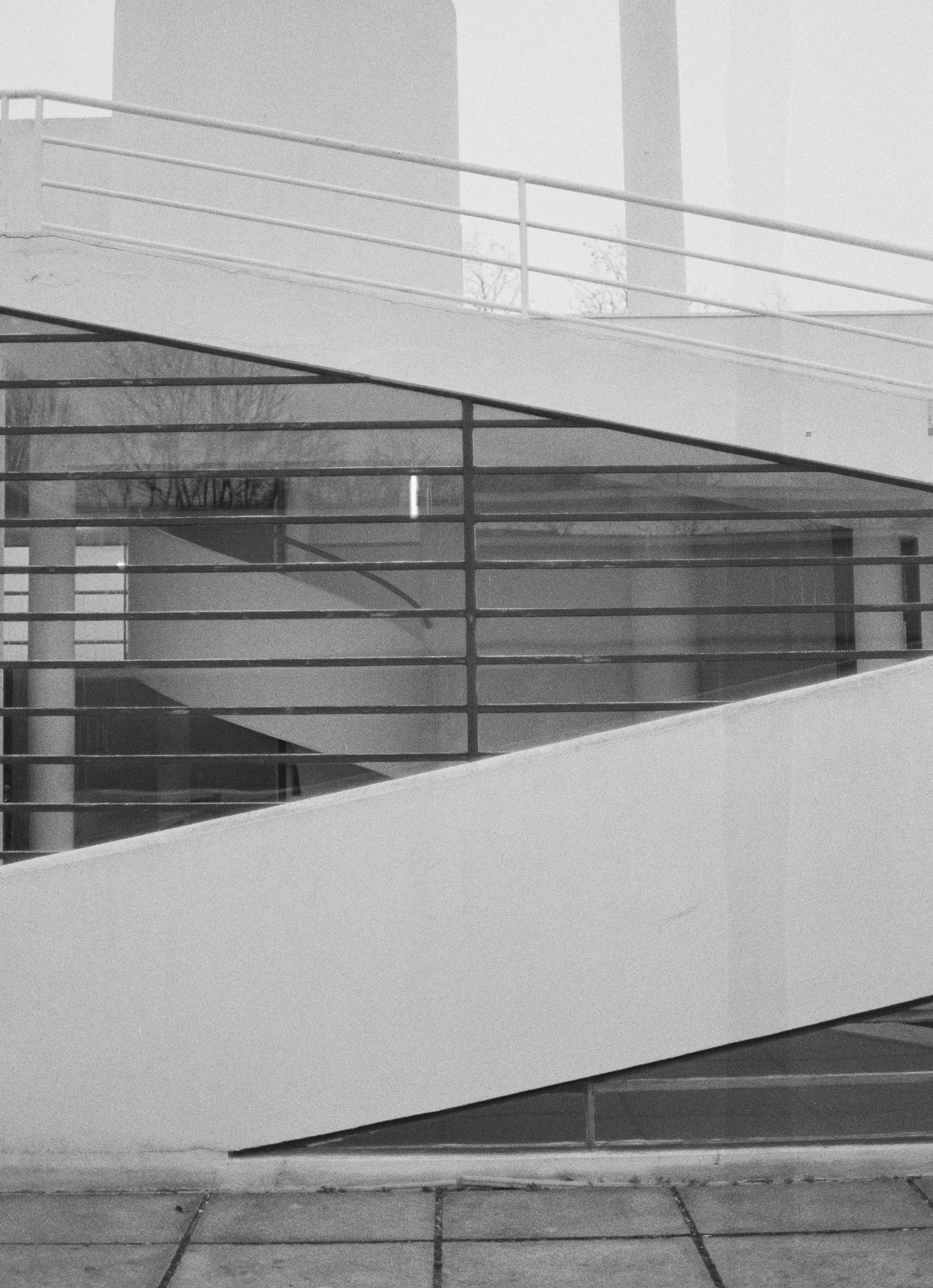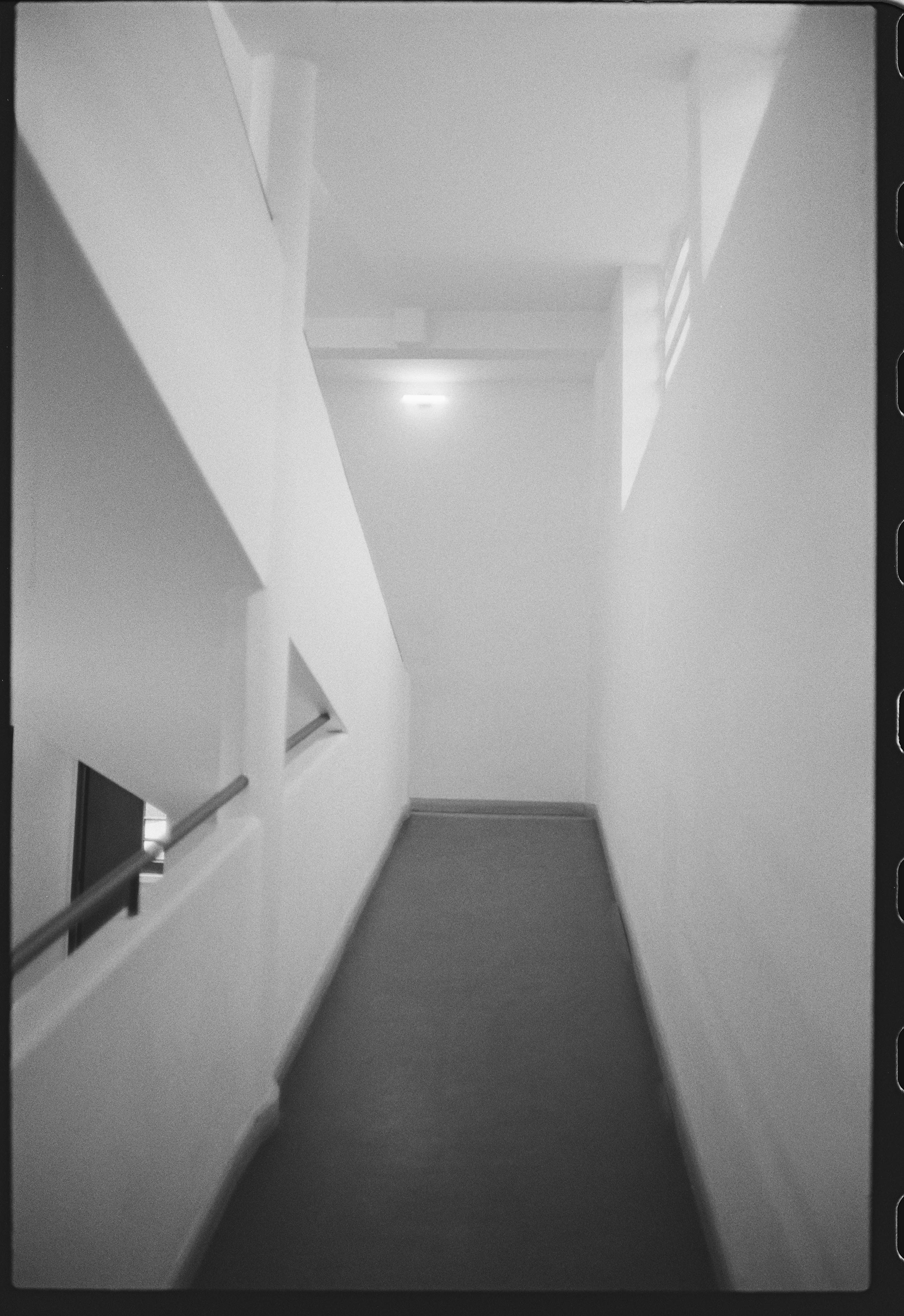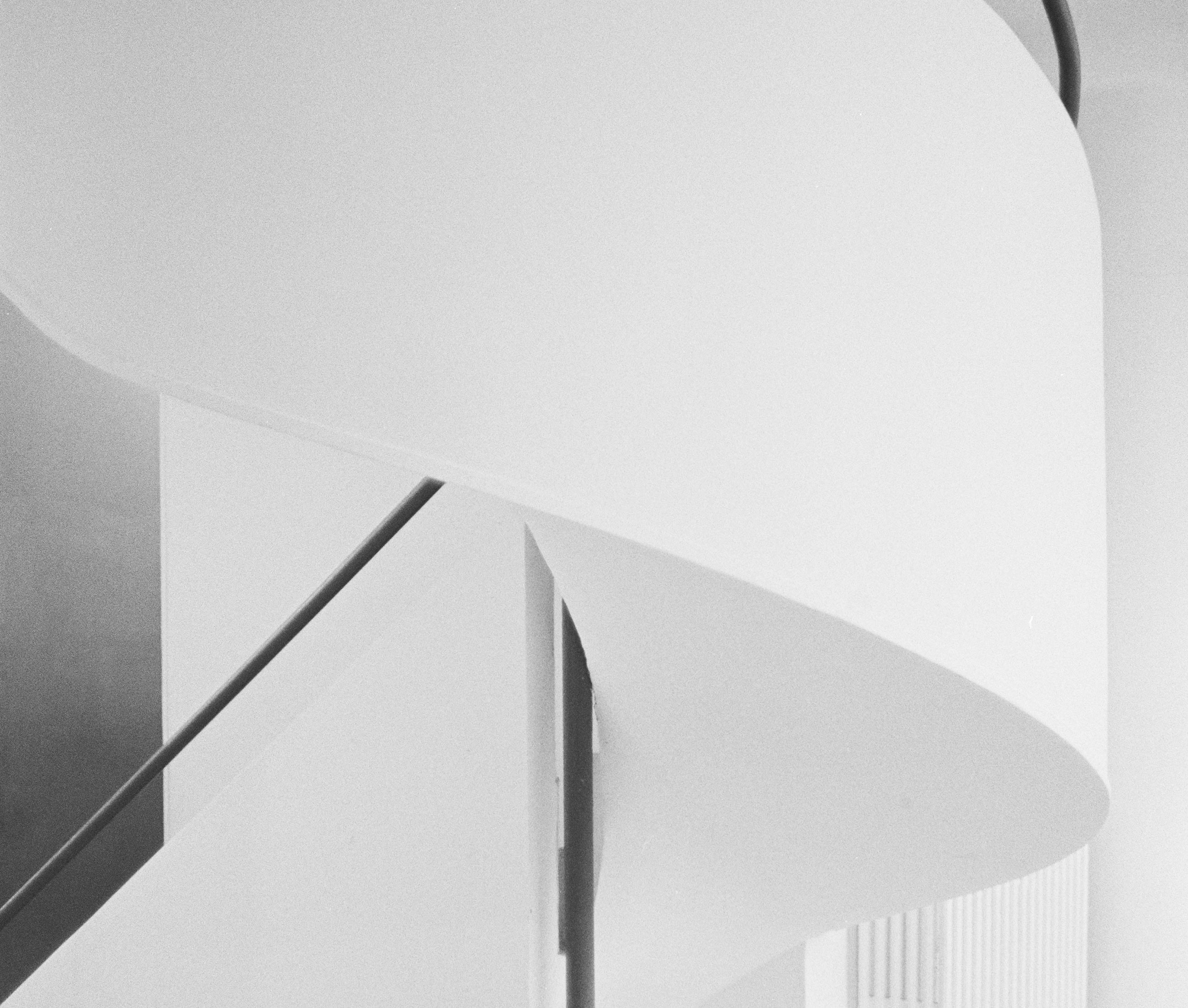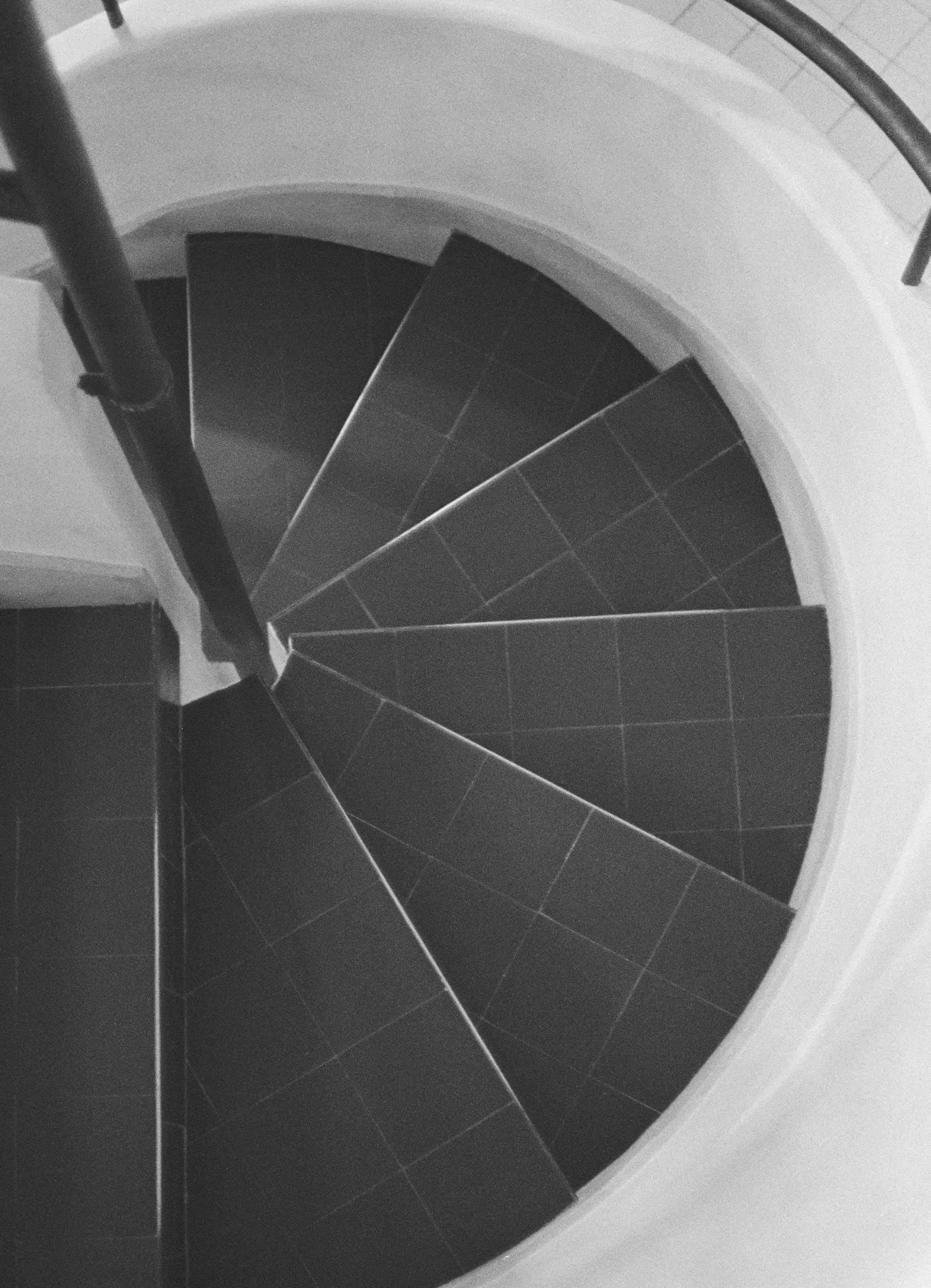L’Esprit Nouveau
VILLA SAVOYE
by Le Corbusier
Almost untouched icons of modern architectural history are hard to find nowadays. At the gates of Paris, in the municipality of Poissy, there is a sophisticated building, carried by slender columns, surrounded by grass fields and deciduous trees—the Villa Savoye.
Villa Savoye, 1928-31
Architect: Le Corbusier
Shot on location in
Poissy, France
The Villa Savoye by Swiss-French architect Le Corbusier displays the characteristic motifs of his work like probably no other design. The shapes are sharp, flawless and universal. One of the most well-known icons of the International Style.
Commissioned by the business family Eugénie and Pierre Savoye, the villa—sometimes also called Villa les Heures Claires—was built between 1929 and 1931 by Le Corbusier and Pierre Jeanneret. The building was intended to function as the couple’s country residence and was constructed within a year without any restrictive building regulations imposed by the clients.
This box of air, as Corbusier called the villa, is the logical realization of his “Five Points of Modern Architecture” recorded in a manifesto in the early 1920s. They went back to his penchant for mechanized design in areas outside architecture. Many of these elements were originally derived from Le Corbusier’s interest in steamboat design, in which these five points frequently appeared.
This box of air, as Corbusier called the villa, is the logical realization of his “Five Points of Modern Architecture” recorded in a manifesto in the early 1920s. They went back to his penchant for mechanized design in areas outside architecture. Many of these elements were originally derived from Le Corbusier’s interest in steamboat design, in which these five points frequently appeared.
These include the (1) stiles (pilotis), a grid of concrete columns replaces the load-bearing walls and becomes the basis of the new aesthetic. The roof gardens (2) on a flat roof can serve both as a utility garden and to protect the concrete roof. The free floor plan design (3) and thus the elimination of load-bearing walls allows flexible use of the living space. The strip windows (4) cut through the non-load-bearing walls along the facade and provide the apartment with uniform light. And the free facade design (5) is made possible by separating the exterior design from the building structure.
Made of reinforced concrete
Le Corbusier described the villa at the time as an architectural walk. When you enter the building, the path clearly reveals itself, offering perspectives of great diversity—it plays with the incidence of light that illuminates the walls or creates a semi-darkness. The ramp is the most representative element, reserved for the owners of the house and their guests—clearly a central element in the architecture of Le Corbusier. The curved interior staircase is designed as a staircase that was actually intended for servants. An architectural element that is normally hidden from view is deliberately showcased here by Le Corbusier, like a sculpture made of reinforced concrete.
The rooms of the house are designed to maximize efficiency while maintaining the minimalist aesthetic for which the architect is so well known.
In the lower, ground level part, there is space for the maintenance and upkeep of the house. While the facade here is painted green to blend in with the forest surrounding the property, the white upper level draws all eyes and stages the living space as the building’s most important volume. The living room of 86 square meters has a sliding glass pane to the terrace and colored walls that, according to Le Corbusier, change the space, affect people and create different living ambiences.
In 1958, the city of Poissy bought the property to build a secondary school. Initially, Villa Savoye was to be demolished, but it was listed as a historic monument in 1963 and has been on the UNESCO World Heritage List since 2016, along with 16 other works by Le Corbusier.
This box of air, as Corbusier called the villa, is the logical realization of his Five Points of Modern Architecture
